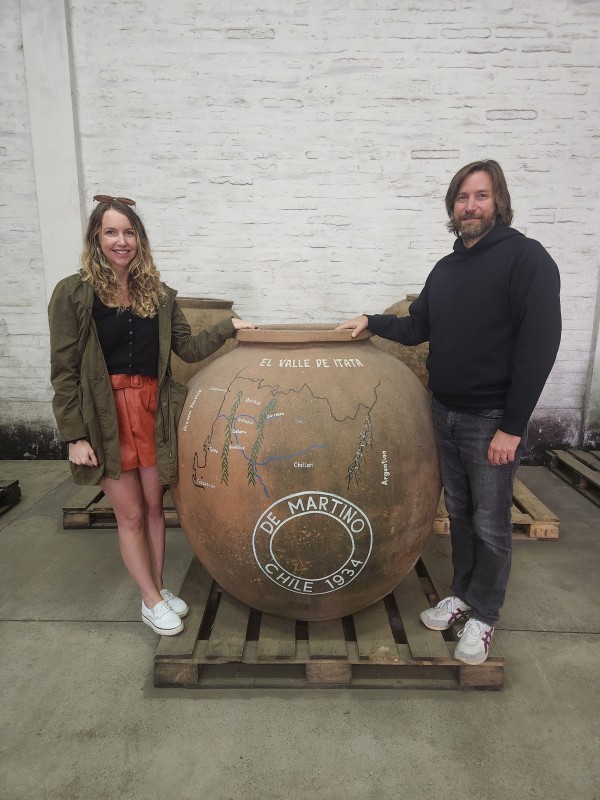Tori Haysom: From NZ to South America - Part Two: Wines of Chile
From Mendoza, I took the most scenic flight of my entire life over the Andes to Santiago, Chile. It was incredible to see the Volcano of Tupungato and again appreciate the vastness of the mighty Andes. The theme of my visit to Chile was to discover the plethora of different wine growing environments both from East to West and North to South. This long, thin country has its main wine growing areas which range from a latitude of 30 degrees ,from the Atacama Desert in the North to 38 degrees and the Patagonian Glaciers to the South.
A coastal range also starts adjoined to the Andes in the North and then divides out to be in parallel to the Andes creating many valleys between them, tapering off closer to the most Southern wine Regions. The effect of these two mountain ranges has resulted in new legal terms to differentiate the wine styles produced even within one appellation.

View of Tupungato Volcano on flight over the Andes, Mendoza - Santiago
My first winery stop here was to De Martino, one of the most influential family-owned wineries in Chile’s Maipo Valley, a wine region that has become engulfed by the city of Santiago. I visited the main cellar and was told the story of Carmenere, a grape that until the end of 1994 was thought to be Merlot, or even ‘Chilean’ Merlot. Guy Hooper, the export manager pulled out a piece of history from the racks in the form of a bottle labelled as Merlot, a vintage exported as such before this revelation. This French grape made its way pre-phylloxera to Chile as ‘Merlot’. Since this grape is mostly found in Bordeaux as a minor blending component, Carmenere wines from Chile have become its point of difference in the wine world.

Amphorae/ Tinajas (Spanish) at De Martino with Marco De Martino (Third generation)

Cabernet Sauvignon Vines from ‘La Concha’ Single Vineyard in Isla de Maipo, De Martino Winery
To my excitement I was then shown the antique Amphorae (Tinajas in Spanish) that De Martino sourced across the country for a project they started following the 2013 purchase of a precious vineyard in Southern Chile, Guarilihue, Itata Valley. Itata is said to be the oldest site of wine growing in the Americas, with vines planted in 1551. To respect these ungrafted bush vines, De Martino honours the history by going back in time and using horses to work the land along with making wines in these beautiful and giant Tinajas, which were kept above ground in Chile due to the Earthquake risks in a country over tectonic plate collisions. I got to wander in this ethereal ancient vineyard sampling Chassalas, Muscat, and Cinsault grapes from these old vines. Granite soils with whole pieces of white quartz throughout add to the spiritual feel to this magical place.
Read the full article here.






